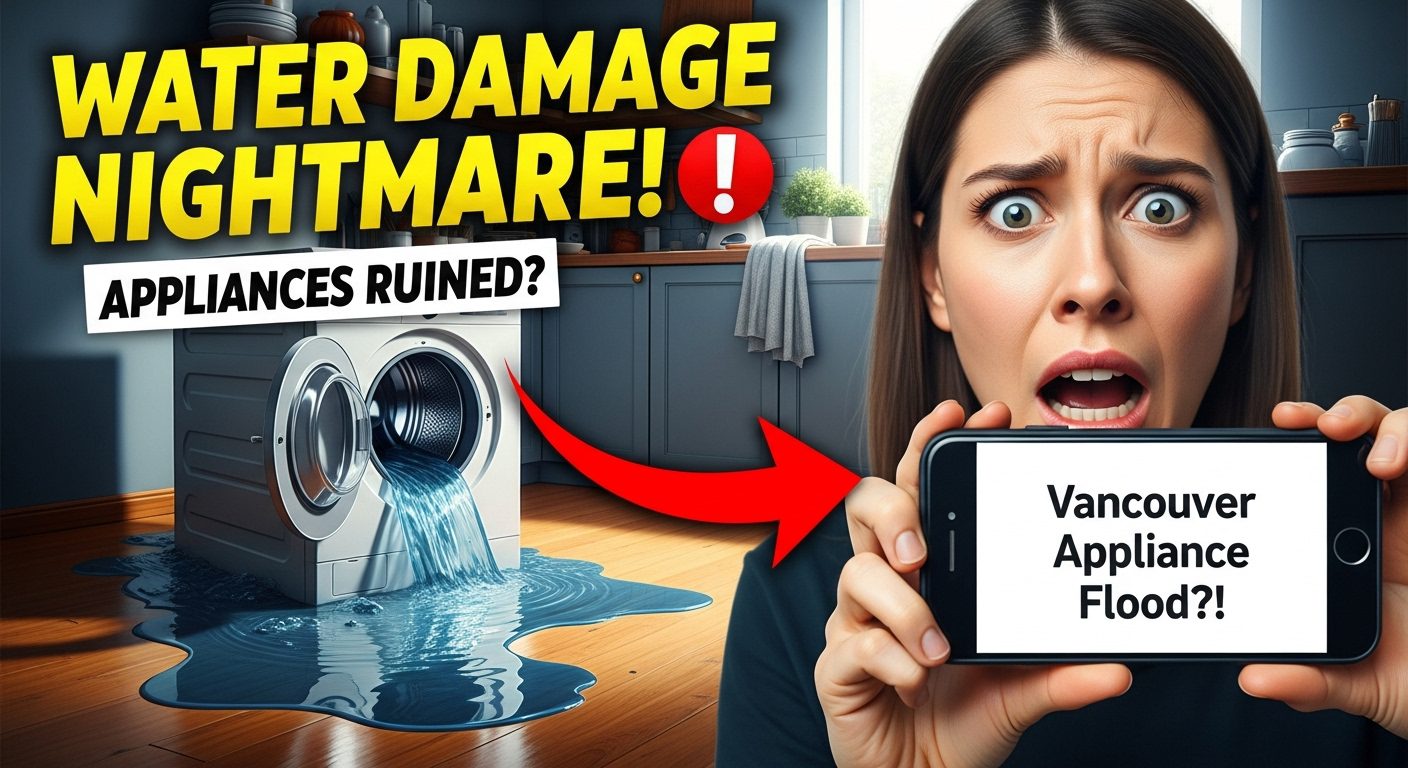Vancouver Appliance Water Damage: How to Assess, Dry, and Restore Flood-Damaged Appliances (And When They’re Beyond Saving)
Dealing with water-damaged appliances after a Vancouver flood? Don’t panic – we’ll walk you through the essential steps to assess, dry, and restore your appliances, plus help you figure out when it’s time to cut your losses and replace them entirely.
Picture this: you wake up to the sound of rushing water in your Vancouver basement, only to discover your brand-new washer and dryer sitting in three inches of murky floodwater. Your heart sinks as you realize your expensive appliances might be toast. But here’s the thing – not all water-damaged appliances are destined for the scrap heap. With the right knowledge, quick action, and professional help, you might be able to save more than you think. 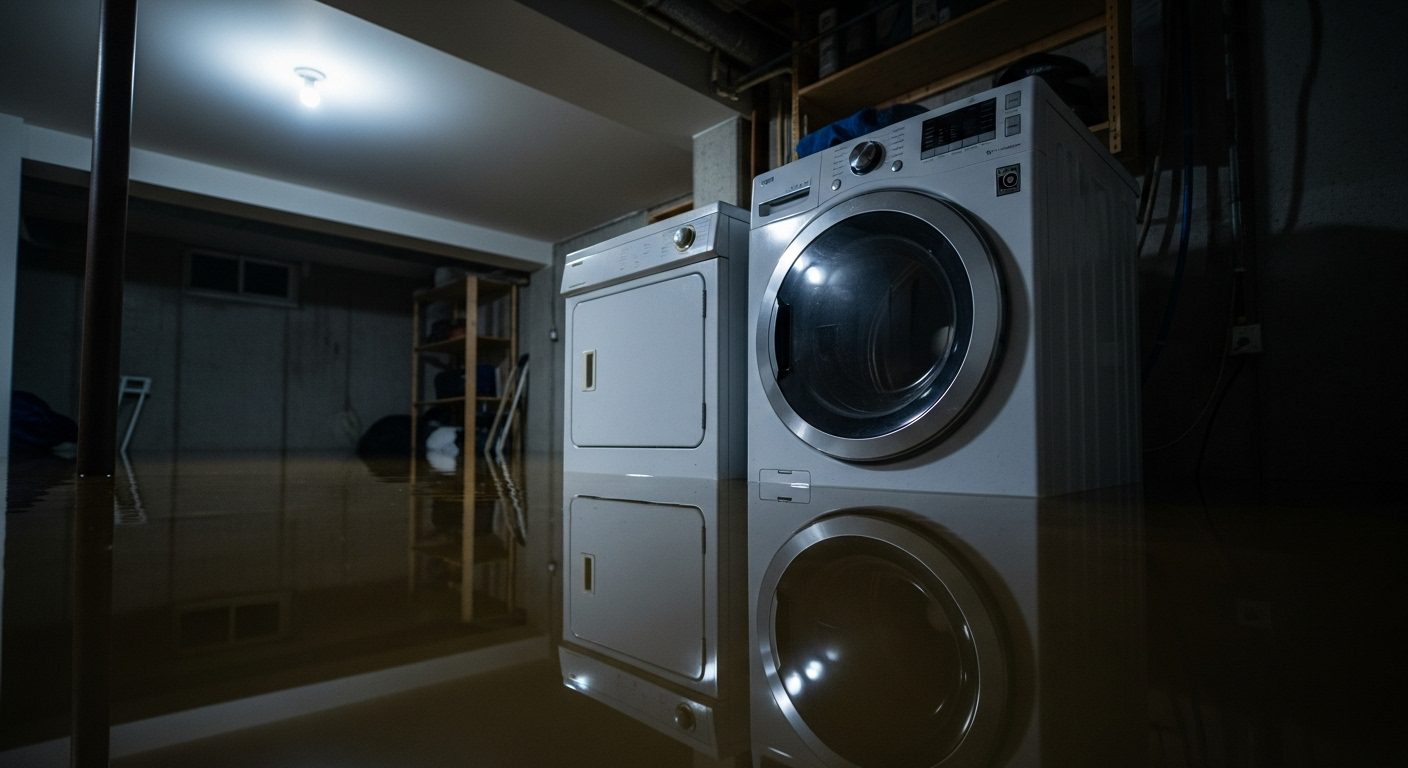
Vancouver’s unique climate presents both challenges and opportunities when dealing with appliance water damage. Our city’s frequent rainfall and high humidity levels mean water damage incidents are unfortunately common, but they also mean local restoration professionals have developed specialized techniques to handle these situations effectively. The key is understanding what can be salvaged, what needs immediate attention, and when it’s more cost-effective to replace rather than repair.
Water damage to appliances isn’t just about the immediate flooding you can see. Hidden moisture can seep into electrical components, insulation, and internal mechanisms, creating long-term problems that might not surface for weeks or months. That’s why a systematic approach to assessment and restoration is crucial for protecting both your investment and your family’s safety.
Key Outtakes:
- Safety comes first: Always disconnect power to water-damaged appliances and avoid electrical hazards by having certified technicians inspect everything before attempting any repairs or restoration work.
- Not all appliances are created equal: Dishwashers and washing machines may be repairable if only seals or hoses are affected, while HVAC systems typically require complete replacement due to safety concerns and corrosion risks.
- Documentation saves money: Thorough photo and video documentation, professional moisture mapping, and detailed inventory lists are essential for successful insurance claims and determining the best restoration approach.
- Vancouver’s climate adds complexity: High humidity and frequent rainfall create additional drying challenges that require specialized equipment and techniques to prevent mold growth and secondary damage.
- Prevention beats restoration: Regular appliance maintenance, leak detection systems, and proper basement waterproofing can prevent most water damage incidents and save thousands in restoration costs.
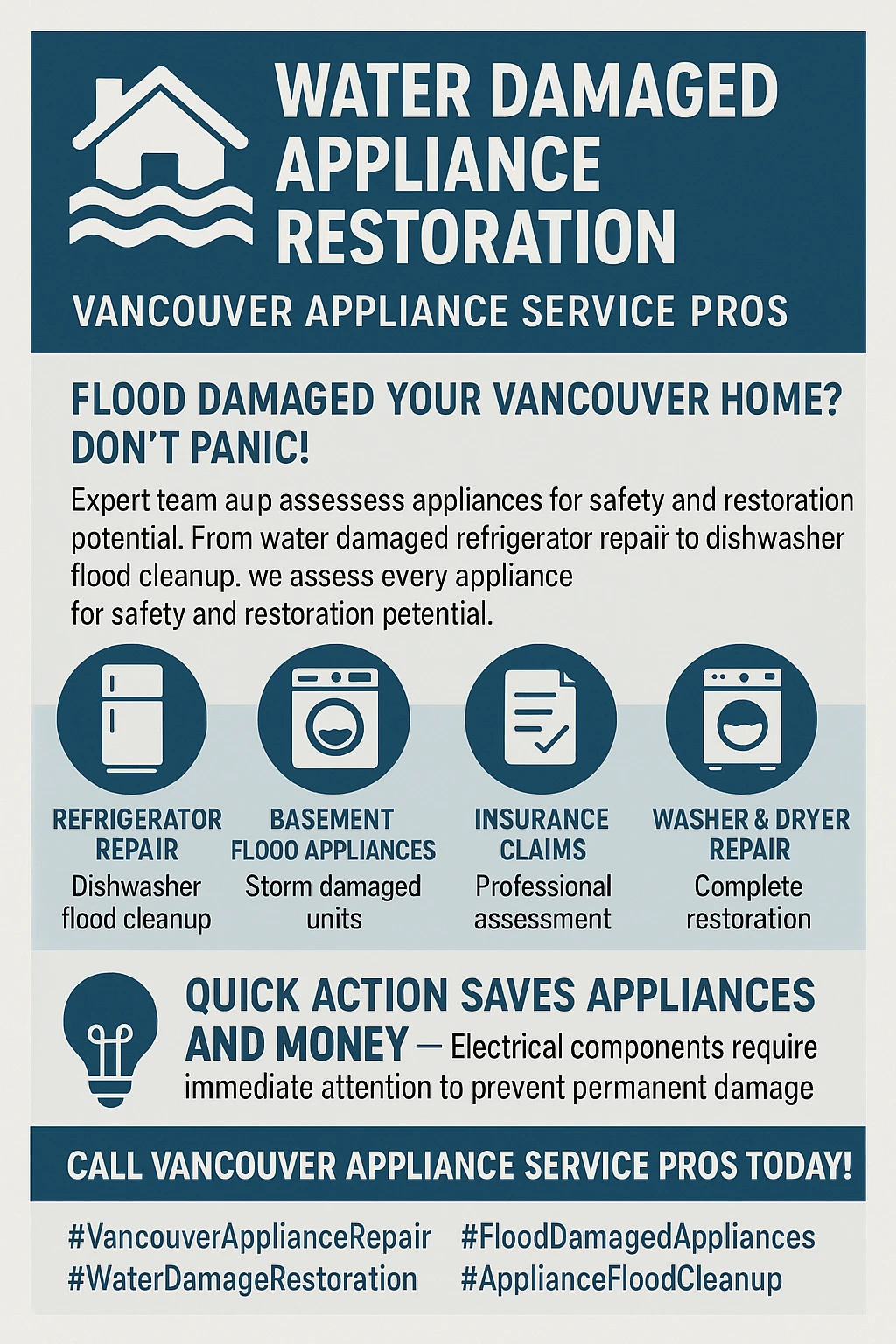
Immediate Safety Assessment and Initial Response
When water damage strikes your appliances, your first instinct might be to rush in and start salvaging what you can. However, the most critical step is ensuring everyone’s safety before touching anything electrical or gas-powered. Water and electricity create a deadly combination, and even appliances that appear undamaged on the surface can harbor serious electrical hazards. 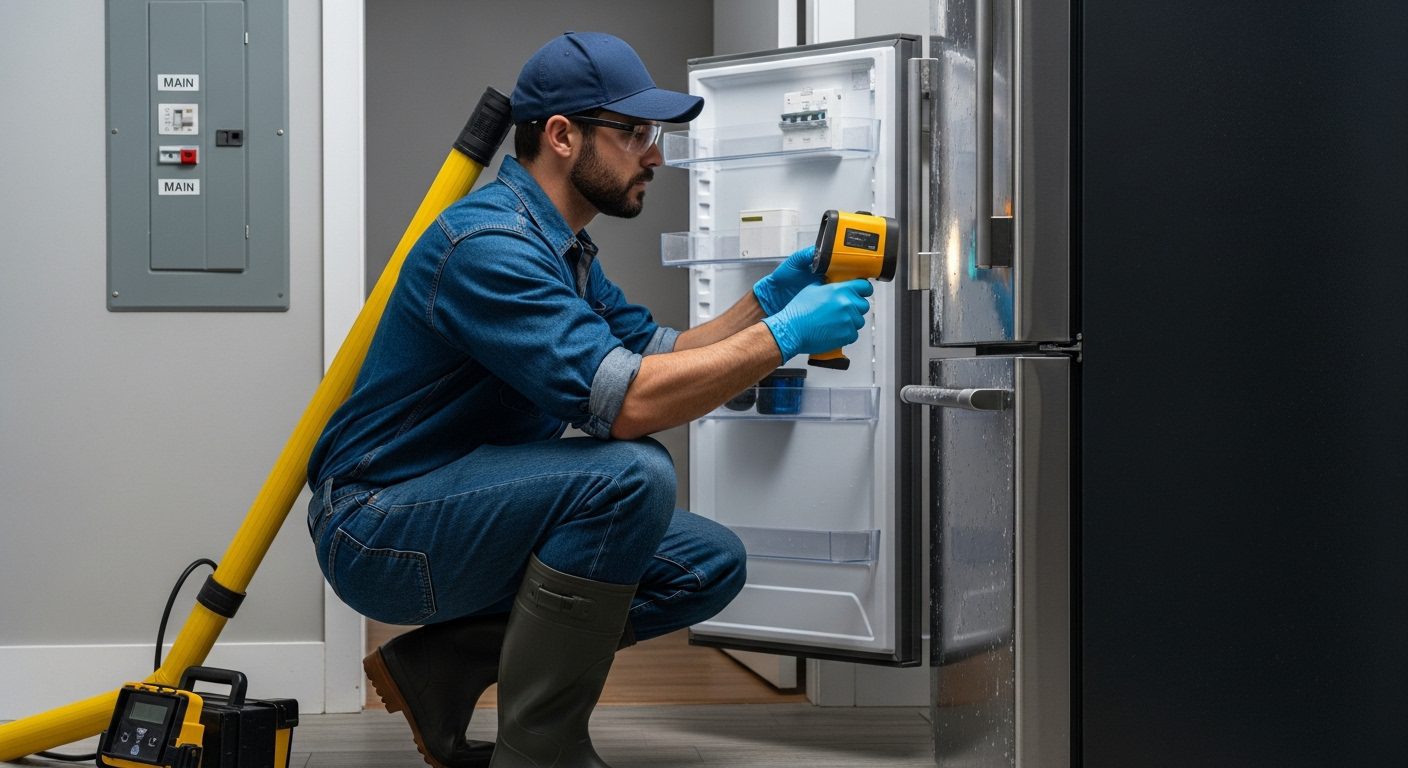
The first thing you need to do is turn off power to the affected area at the circuit breaker, not just at the appliance level. Standing water can conduct electricity through unexpected pathways, making even “safe” areas potentially dangerous. If you can’t safely reach your electrical panel without walking through water, call your utility company to shut off power to your home entirely. This might seem like overkill, but electrical shock injuries from water-damaged appliances send dozens of people to Vancouver hospitals every year.
Gas appliances present their own unique hazards during flooding events. Natural gas can accumulate in flooded basements, creating explosion risks that persist long after the water recedes. If you smell gas or suspect a leak in your water-damaged area, evacuate immediately and call FortisBC’s emergency line. Don’t assume that because an appliance looks intact, its gas connections haven’t been compromised by shifting foundations or floating debris.
Professional assessment becomes crucial at this point because trained technicians have the equipment and expertise to safely evaluate electrical and gas systems that homeowners simply can’t match. IICRC-certified restoration specialists use moisture meters, thermal imaging cameras, and gas detection equipment to identify hazards that aren’t visible to the naked eye. They can determine whether it’s safe to begin restoration work or if additional safety measures are needed first.
Appliance-Specific Assessment Techniques
Understanding how different types of appliances respond to water damage will help you make informed decisions about repair versus replacement. Each appliance category has unique vulnerabilities and restoration requirements that affect both safety and cost-effectiveness.
Washing machines and dryers are among the most commonly water-damaged appliances in Vancouver basements, and they present interesting restoration challenges. Modern front-loading washers have complex electronic control panels that can be expensive to replace, but the mechanical components like pumps and motors are often salvageable if the flooding was brief. Experienced repair technicians can often restore these appliances by replacing damaged hoses, cleaning electrical contacts, and thoroughly drying internal components.
Dryers are particularly tricky because their internal insulation can absorb large amounts of water, creating ideal conditions for mold growth. If floodwater reached the dryer’s internal components, the entire insulation system may need replacement, which often costs more than buying a new unit. However, if only the external cabinet was affected, cleaning and sanitizing the interior surfaces might be sufficient.
Refrigerators and freezers present unique challenges because their sealed systems and complex electronics are highly sensitive to water damage. The compressor and refrigerant lines are typically well-protected, but control boards, temperature sensors, and ice makers are vulnerable to even small amounts of moisture. Professional technicians use specialized drying techniques and electronic testing equipment to determine whether these sensitive components can be restored or need replacement.
Dishwashers might seem like they should handle water damage well since they’re designed to contain water, but flooding from external sources introduces contaminants that can damage seals, pumps, and spray arms. The good news is that most dishwasher components are readily accessible and relatively inexpensive to replace, making restoration often more cost-effective than replacement.
Range hoods, garbage disposals, and other kitchen appliances each have their own restoration considerations. Electric ranges with digital displays and complex control systems are particularly vulnerable, while gas ranges may need complete safety inspections of their gas lines and ignition systems.
Professional Drying and Restoration Techniques
Once safety has been established and initial assessments completed, the real work of restoration begins. Professional water damage restoration isn’t just about removing visible water – it’s about identifying and eliminating moisture that has penetrated into places you can’t see or reach with conventional drying methods. 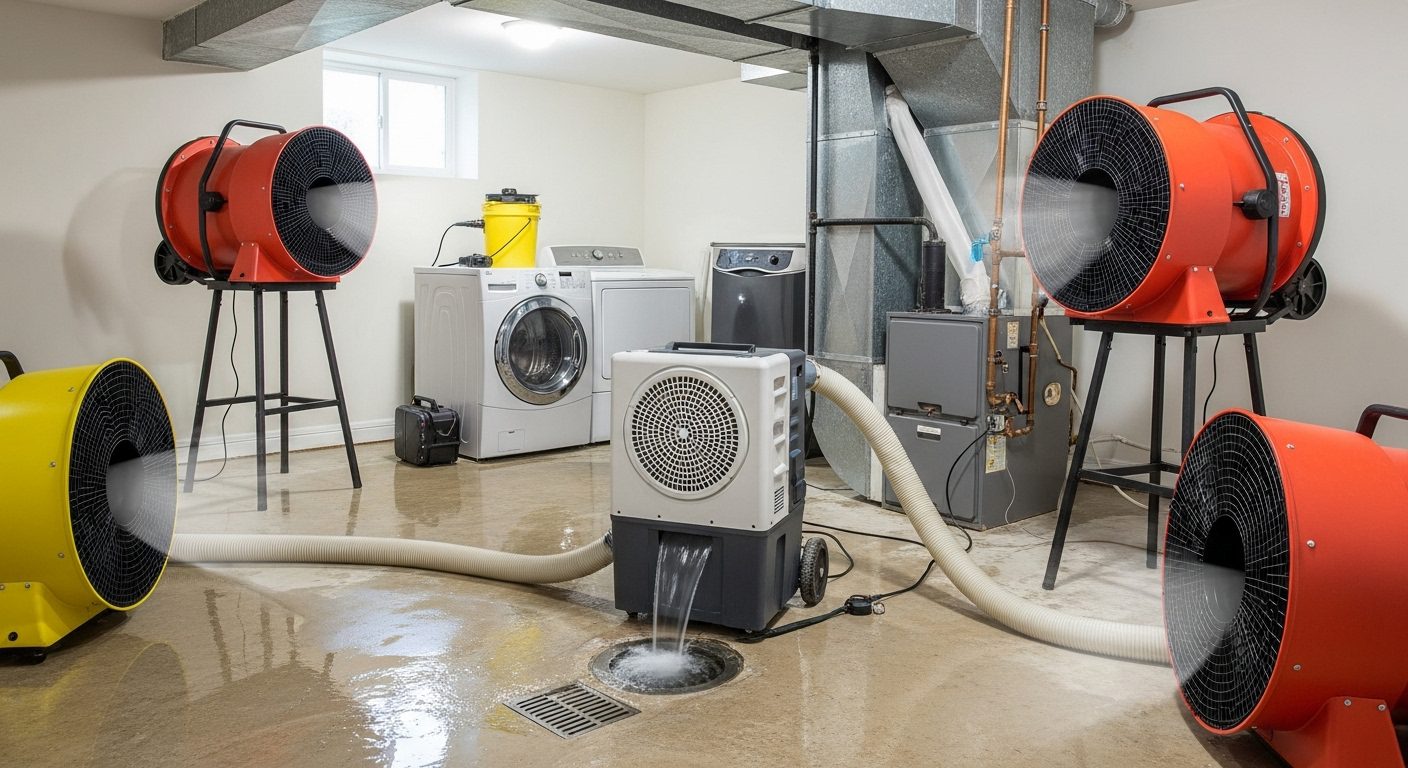
The restoration process starts with thorough water extraction using industrial-grade equipment that can remove water from tight spaces around and under appliances. Professional restoration teams use truck-mounted extraction units that can remove hundreds of gallons per hour, while portable extractors handle detailed work around appliance connections and in confined spaces. This initial extraction is critical because every hour that water remains in contact with appliance components increases the likelihood of permanent damage.
Moisture detection and mapping represent sophisticated aspects of professional restoration that homeowners can’t replicate. Professional technicians use thermal imaging cameras to identify temperature differences that indicate hidden moisture, while non-invasive moisture meters can detect water presence inside walls, floors, and appliance housings without causing damage. Restoration specialists in Vancouver have developed particular expertise in dealing with moisture that penetrates concrete foundations and gets trapped in the building envelope.
Air movement and dehumidification form the backbone of effective drying strategies. Professional restoration uses carefully calculated air changes per hour, strategic placement of air movers, and commercial dehumidifiers to create optimal drying conditions. In Vancouver’s humid climate, this process requires more aggressive dehumidification than in drier regions, and restoration professionals often use desiccant dehumidifiers that can operate effectively even in cooler temperatures common in flooded basements.
Temperature control plays a crucial role in accelerating the drying process while preventing secondary damage like condensation. Professional restoration teams heat affected areas to increase evaporation rates while carefully monitoring humidity levels to prevent moisture from condensing in other areas. This balancing act requires experience and professional equipment that maintains consistent conditions throughout the drying process.
Sanitization and antimicrobial treatment become essential when floodwater has introduced contaminants into appliance areas. Professional restoration teams use hospital-grade disinfectants and antimicrobial treatments that eliminate bacteria, viruses, and mold spores while being safe for use around appliances and food preparation areas. These treatments require proper application techniques and safety equipment to be effective without causing additional damage.
When Repair Isn’t Worth the Risk
Making the decision between repair and replacement involves balancing safety, cost, and long-term reliability considerations. Some situations clearly favor replacement, while others fall into gray areas where professional judgment and cost




